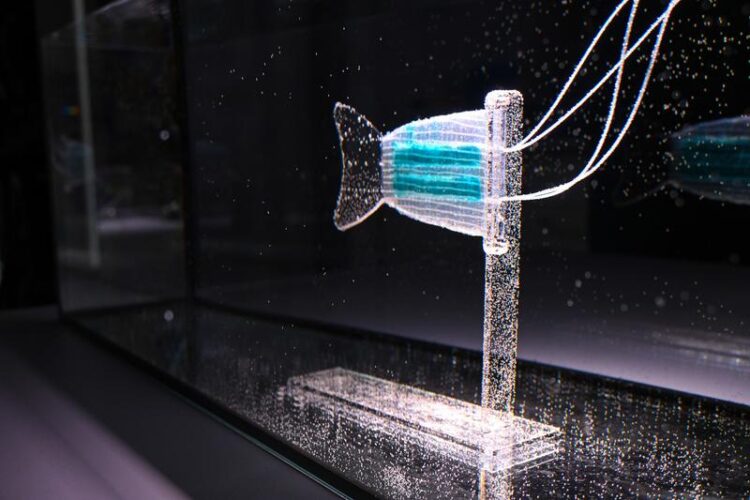Intelligent materials for robotics and prostheses

Biomimetic fish fin with dielectric elastomer actors und fiber reinforcement
© ITM/TUD
Successful approval of the 2nd funding period of the DFG Research Training Group 2430.
Researchers based in Dresden are going to develop a completely new class of materials in which actuators and sensors are integrated directly into flexible fibre composites – contrary to the state of the art. To this end, the German Research Foundation (DFG) approved the 2nd phase of Research Training Group 2430 “Interactive Fibre-Elastomer Composites” at TU Dresden in cooperation with the Leibniz Institute of Polymer Research Dresden. The spokesperson is Professor Chokri Cherif from the Institute for Textile Machinery and High-Performance Textile Materials Technology (ITM) at TU Dresden. A total of 22 doctoral students will be supported in eleven interdisciplinary sub-projects over the next 4.5 years, in addition to material and project funding.
As a result, the simulation-based development of intelligent material combinations for so-called self-sufficient fibre composites shall be available. Actuators and sensors are already integrated into the structures and no longer placed subsequently, as it is actual the case. In the first funding phase, the important basis for the large two-dimensional deformations in soft, biomimetic structures were developed. The further funding by the DFG is a confirmation of the outstanding results achieved so far. Building on this, the second funding phase will focus on ionic and helical actuator-sensor concepts. Combined with intelligent design and control algorithms, self-sufficient, three-dimensionally deforming material systems will emerge. This will make these systems more robust, complex preforming patterns can be customised at the desired location – reversibly and contact-free.
Fibre composites are used increasingly in moving components due to their high specific stiffness and strengths as well as the possibility of tailoring these properties. By integrating adaptive functions into such materials, the need for subsequent actuator placement is eliminated and the robustness of the system is significantly improved. Actuators and sensors based on textiles, such as those being researched and developed at the ITM, are particularly promising in this respect, as they can be integrated directly into the fibre composites during the manufacturing process.
With their innovative properties, interactive fibre-elastomer composites are predestined for numerous fields of application in mechanical and vehicle engineering, robotics, architecture, orthotics and prosthetics: Examples include systems for precise gripping and transport processes (e.g. in hand prostheses, closures and deformable membranes) and components (e.g. trim tabs for land and water vehicles).
Wissenschaftliche Ansprechpartner:
Prof. Chokri Cherif (GRK spokesperson)
Phone: +49 351 463-39300
E-Mail: chokri.cherif@tu-dresden.de
Weitere Informationen:
https://tu-dresden.de/ing/forschung/graduiertenkollegs/grk2430?set_language=en Research Training Group 2430 website
https://cloudstore.zih.tu-dresden.de/index.php/s/jZGqkSKQS9D7SBF Picture download
Media Contact
All latest news from the category: Interdisciplinary Research
News and developments from the field of interdisciplinary research.
Among other topics, you can find stimulating reports and articles related to microsystems, emotions research, futures research and stratospheric research.
Newest articles

Innovative 3D printed scaffolds offer new hope for bone healing
Researchers at the Institute for Bioengineering of Catalonia have developed novel 3D printed PLA-CaP scaffolds that promote blood vessel formation, ensuring better healing and regeneration of bone tissue. Bone is…

The surprising role of gut infection in Alzheimer’s disease
ASU- and Banner Alzheimer’s Institute-led study implicates link between a common virus and the disease, which travels from the gut to the brain and may be a target for antiviral…

Molecular gardening: New enzymes discovered for protein modification pruning
How deubiquitinases USP53 and USP54 cleave long polyubiquitin chains and how the former is linked to liver disease in children. Deubiquitinases (DUBs) are enzymes used by cells to trim protein…



